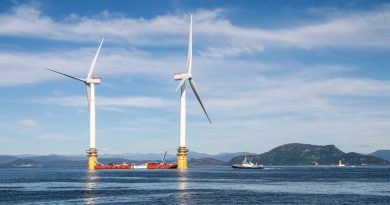With prices falling, payback shortening and product choice booming, there’s never been a better time to invest in renewables.
In this article, myenergi co-founder Jordan Brompton dispels common green energy myths and explains the rapid acceleration of microgeneration.
Last year was a record-breaker for domestic renewable energy installations in the UK, according to data from the Microgeneration Certification Scheme. More low-carbon energy and heating installations were recorded than in any other year on record, with upwards of 220,000 systems commissioned in just twelve months.
From solar PV and heat pumps, to wind, hydro and battery storage, homeowners are adopting clean energy tech at breakneck speed. While the ever-growing popularity of sustainability is a major driver, so too are volatile energy prices – with unpredictable rates driving consumers to investigate alternative solutions.
However, despite this step-change in demand, hesitancy lingers among some homeowners, many of whom have been put off by misconceptions around the cost, value and return of green energy. Let’s dive into some of these in more detail to sort fact from fiction.
Myth 1: Installing renewables is really, really expensive
We’ve all heard the rumours, right? A basic solar set-up will set you back about the same price as a brand new car. Installation alone will cost you thousands. The ‘added extras’ blow your budget out the water. The list goes on, and on.
But what’s the truth in it? Well, not a great deal! According to Which?, a typical 3.5kWp solar PV array (enough to provide sufficient power for a family of four) can be purchased AND installed for around £5,500. With data from Ofgem suggesting that the average annual energy bill for a three to four-bed property currently sits at £1,936 per year, it’s far from a ludicrous investment. In fact, figures from Checkatrade suggest that it’s about the same cost as installing a new bathroom, or about half the cost of the average new kitchen.
What’s more, there are numerous government grants available that further reduce the purchase price of microgeneration. Aside from the widely publicised £7,500 grants for air and ground-source heat pumps, there is also VAT relief on a wide range of energy tech – from home batteries and power diverters, to EV chargers and more!
Busted.
Myth 2: Renewables offer minimal benefits for the average user
It’s fair to say that during peak generation hours (typically during the day for solar PV), many users are away from the home. As a result, the historic average consumption rate for self-generated power sat at just 45%.
Self-generated energy was often exported to the grid at a low price during the day, and then bought back at a higher price in the evenings. This has led many to believe that renewable energy is only an option for retirees or flexible workers who are usually at home during the day. Simple economics, right?
Well, while this was a major concern back in the early days of renewables, it’s safe to say that things have changed. Developments in battery storage, for example, have turned the argument upside-down. In addition, microgeneration diversion devices (such as energy controllers and solar-compatible EV chargers) can provide a simple way to maximise the value in self-generation.
The myenergi eddi is a great example. Designed to save money and save energy, eddi works in parallel with microgeneration to divert green energy to where it’s needed most. Rather than exporting surplus back to the grid in periods of high generation and low demand, eddi redirects power to your immersion heater, storage heater, underfloor heating, electric heater or any other electrical resistive load up to 3.68kW with a mechanical thermostat.
So, once you’ve paid back your investment, you can generate completely free renewable energy for your home. I’d argue that’s a pretty major benefit.
Busted.
Myth 3: Energy prices are set to fall, so renewables aren’t worth it
With the UK’s domestic energy price cap set to fall to £1,690 in April, down £238 from 2023, grid electricity is certainly becoming more cost effective than the wild post-COVID price hikes. The trouble is, there’s no guarantee that fluctuating energy prices will remain low in the future.
With so much global uncertainty, we don’t know where energy prices will be a few months down the line, let alone in five years. So why risk it?
Microgeneration with energy storage is unequivocally the best way to protect against volatility, with falling prices and a good return on investment. What’s more, you get the added benefit of reducing your carbon footprint and minimising reliance on fossil fuels.
One last cherry on the cake is the long-term benefit of microgeneration. According to Rightmove, upping your home EPC rating from F to C can increase the value of the property by up to 15%. Now that the UK housing market is finally starting to get a foothold after a multi-year slump, this could be the perfect time to think about increasing the value of your home.
Busted.
Where do we go from here?
With favourable legislation, falling prices, rising availability of tech and positive impacts on house prices, the return on investment for microgeneration is now more attractive than ever, and homeowners should strongly consider making 2024 the year to finally seize the opportunity.
Of course, there is truth behind a number of these myths, but it’s important to appreciate rapid industry progress. What was a common challenge just a few years ago is now a non-starter. What was previously a deal-breaker is now a distant memory. Having the facts to hand is so important when considering the switch to renewables.
For more information about myenergi, or its eco-smart range of home energy technologies, visit www.myenergi.com.






